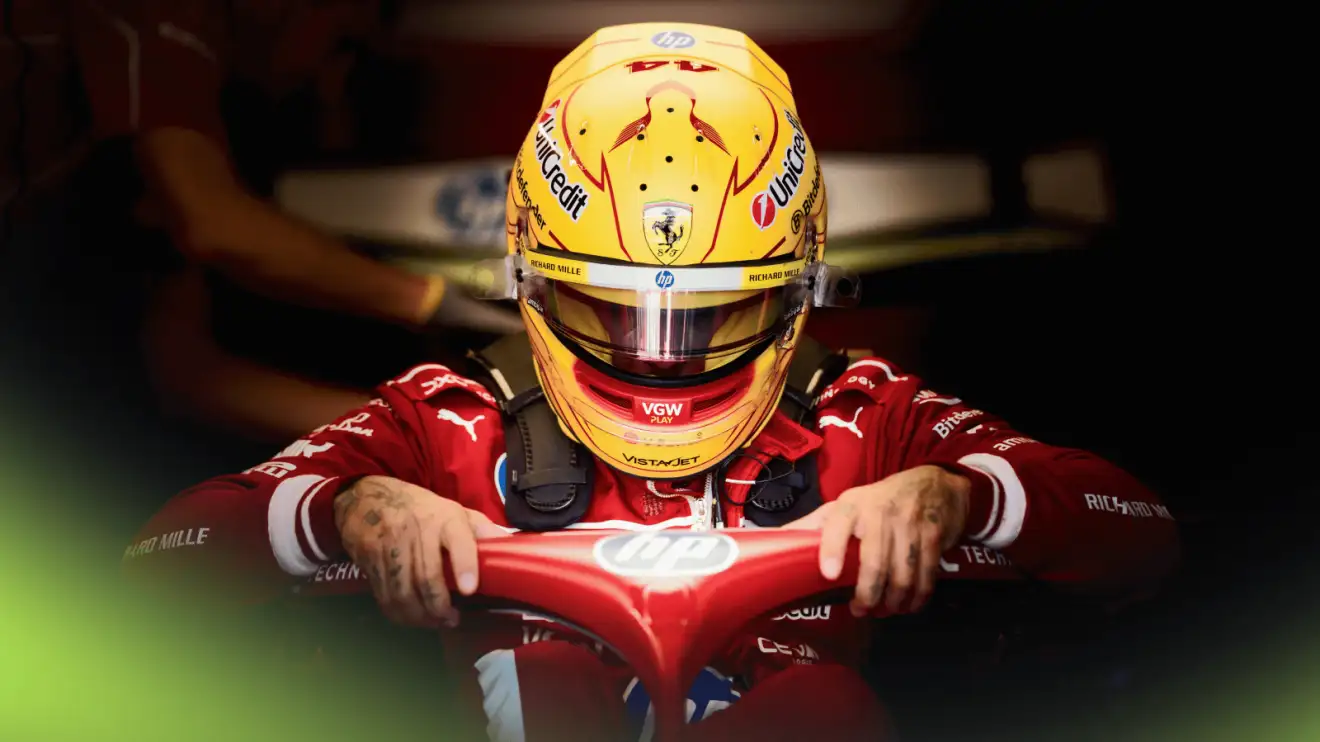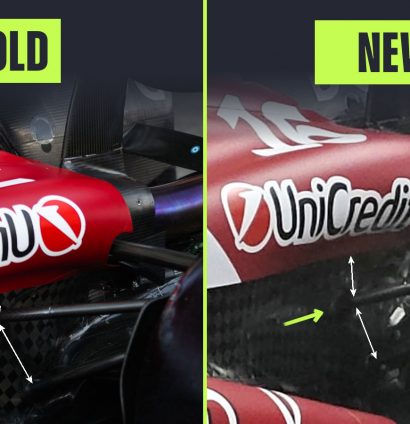New Project 678 progress update as Ferrari makes ‘final choices’ for F1 2026 – report

Lewis Hamilton lowers himself into the cockpit of the Ferrari SF-25 at the 2025 Australian Grand Prix
Ferrari’s encouraging performances at the recent United States and Mexican grands prix has convinced the team to make ‘fewer changes’ than planned to its F1 2026 car, it has been claimed.
It comes after it emerged last month that Project 678, the car Charles Leclerc and Lewis Hamilton will drive next season, will have a ‘revolutionary’ engine design.
Ferrari to make fewer changes than planned to Project 678 suspension for F1 2026
Ferrari has endured a disappointing F1 2025 season with the Italian team still without a win ahead of the final round rounds in Brazil, Las Vegas, Qatar and Abu Dhabi.
The SF-25 car has been blighted by a fundamental ride-height problem, which saw Hamilton disqualified from his second race with Ferrari in China due to excessive skid-block wear.
The Scuderia has been forced to raise the car’s ride height at the cost of performance in the months since to avoid a repeat.
Lewis Hamilton vs Charles Leclerc: Ferrari head-to-head scores for F1 2025
👉 F1 2025: Head-to-head qualifying statistics between team-mates
👉 F1 2025: Head-to-head race statistics between team-mates
Ferrari produced improved performances at the recent double header in the United States and Mexico with Leclerc coming away with two podium finishes.
Leclerc’s third-place finish in Austin, Texas, was deemed particularly impressive given the bumpy nature of the Circuit of the Americas, which had been expected to expose the SF-25’s main weakness.
With Ferrari’s improved pace translating into Mexico, a venue posing a different technical challenge, it has emerged that the team’s fears have been eased ahead of next year’s major rule changes.
A report by Italian publication La Gazzetta dello Sport has claimed that the last two races have ‘eliminated many doubts about some final choices that still had to be made for 2026.’
As a result, fewer changes than originally planned will be made to the suspension of Project 678.
Ferrari’s suspension has emerged as a major talking point over the last 12 months with the team switching to a pullrod front suspension, long used by the likes of Red Bull and McLaren, for 2025.
A new rear suspension layout was introduced at the Belgian Grand Prix in July in a bid to unlock more of the SF-25’s potential with mixed results.

The report states that Ferrari had been prepared to make significant modifications to both the front and rear suspension for F1 2026 had the current arrangement continued to malfunction.
However, the SF-25’s stable and consistent performance under different load conditions in the US and Mexico has persuaded the team towards evolution rather than revolution with Project 678, allowing Ferrari to work with ‘greater certainty’ on the 2026 suspension.
It is said that ‘only the elastic response values of components such as torsion bars and heave dampers’ will be changed for 2026, with the latter responsible for managing ground clearance.
Formula 1’s move away from ground-effect cars with the new F1 2026 regulations – which will see the sport embrace 50 per cent electrification, fully sustainable fuels and active aerodynamics – is expected to solve Ferrari’s main weakness from the current season.
More on Ferrari drivers Lewis Hamilton and Charles Leclerc from PlanetF1.com
The latest design details regarding Project 678 come after it emerged last month that Ferrari is working on a ‘revolutionary’ new engine for 2026.
It was claimed in Italy that the team’s new power unit will feature an aluminum alloy cylinder head featuring ‘a top-secret intake system.’
The move came after a ‘highly innovative steel cylinder head’ solution, proposed by outgoing head of ICE (internal combustion engine) and research and development Wolf Zimmermann, was ‘abandoned’ due to reliability concerns.
The Italian media has been historically accurate when it comes to predicting technical details of new Ferrari F1 cars.
The team’s move to a pullrod front suspension and a darker livery, as well as the decision to move the cockpit further back, all emerged months before the SF-25 was officially launched in February this year.
Read next: Lewis Hamilton issues new Ferrari plea after contract rumours hit overdrive





